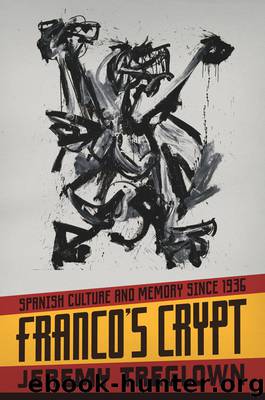Franco's Crypt by Jeremy Treglown

Author:Jeremy Treglown
Language: eng
Format: epub
Publisher: Farrar, Straus and Giroux
8
Franco’s Films
I’ll never forget coming out of the Amaya cinema in Madrid one afternoon when I was in my teens after seeing El espíritu de la colmena; or the racket that rose from the stalls not long afterward, when La prima Angélica and Furtivos were shown. What was happening in the cinema was what we were living through, the tedious Franco years and our rage at so much injustice, and our longing for freedom—the trembling sense of already experiencing it even before we had got it.
This is the novelist Antonio Muñoz Molina, writing in his fifties about the multidirectionality of imaginative time.1 The movies he mentions came out between 1973 and 1975, the last years of the Franco era. No one then had videos or DVDs, and the Internet didn’t exist. Old films were reshown as one-offs on television or in cinema clubs, but seeing a film still felt like an evanescent experience, almost comparable to live performance in that there was no certainty of repetition. This is one of those facts about technological change that contribute to the mentalities of different generations. Yet there was never a pacto de olvido in Spanish moviemaking, and as the ability of audiences to watch films has become independent of cinemas and their distribution arrangements, the power of movies to influence historical understanding has grown. A consequence is that historically based criticism has also become more important. It can really matter whether what is depicted is “true,” and in what senses.
As with prose fiction, the underlying issues change as the distances grow between the “now” of the work, when it was made, and when it is seen. Often this process of change, including the operation of memory itself, plays a part of its own—even becomes the main story, which is one of the ways in which a film made in the twenty-first century can find its own truth about the events of the past. In the pursuit of novelty by filmmakers, by their audiences, and (helping to drive both) by commercial enterprises, the past can also of course get lost: we’re too busy catching up with the latest film to watch an older one about the same situation. This chapter will mainly be about films made during the dictatorship. But again, like fiction (which has often provided its stories), Spanish cinema powerfully reflects the country’s absorption in and anxiety about memory and forgetting in themselves.
RECENT PREOCCUPATIONS: MEMORY VERSUS MOVING ON; HISTORY VERSUS MYTH; WHAT THE CHILDREN SAW
Of all today’s filmmakers, Pedro Almodóvar is the one who has made the most out of the combined parallels and differences between life and performance, what lasts and what, as soon as it arrives, is lost. It’s an old trope, of course, both of theater and of other arts, but cinema, TV, and the Internet have all given it new turns, and Almodóvar is fabulously alert to where the new and the disappearing meet: city and country; movie actresses aging in life but not on the screen; new media and old habits.
Download
This site does not store any files on its server. We only index and link to content provided by other sites. Please contact the content providers to delete copyright contents if any and email us, we'll remove relevant links or contents immediately.
| African | Asian |
| Australian & Oceanian | Canadian |
| Caribbean & Latin American | European |
| Jewish | Middle Eastern |
| Russian | United States |
4 3 2 1: A Novel by Paul Auster(12283)
The handmaid's tale by Margaret Atwood(7679)
Giovanni's Room by James Baldwin(7191)
Asking the Right Questions: A Guide to Critical Thinking by M. Neil Browne & Stuart M. Keeley(5633)
Big Magic: Creative Living Beyond Fear by Elizabeth Gilbert(5610)
Ego Is the Enemy by Ryan Holiday(5294)
The Body: A Guide for Occupants by Bill Bryson(4974)
On Writing A Memoir of the Craft by Stephen King(4863)
Ken Follett - World without end by Ken Follett(4645)
Adulting by Kelly Williams Brown(4487)
Bluets by Maggie Nelson(4473)
Eat That Frog! by Brian Tracy(4435)
Guilty Pleasures by Laurell K Hamilton(4360)
The Poetry of Pablo Neruda by Pablo Neruda(4039)
Alive: The Story of the Andes Survivors by Piers Paul Read(3968)
White Noise - A Novel by Don DeLillo(3954)
Fingerprints of the Gods by Graham Hancock(3940)
The Book of Joy by Dalai Lama(3899)
The Bookshop by Penelope Fitzgerald(3775)
